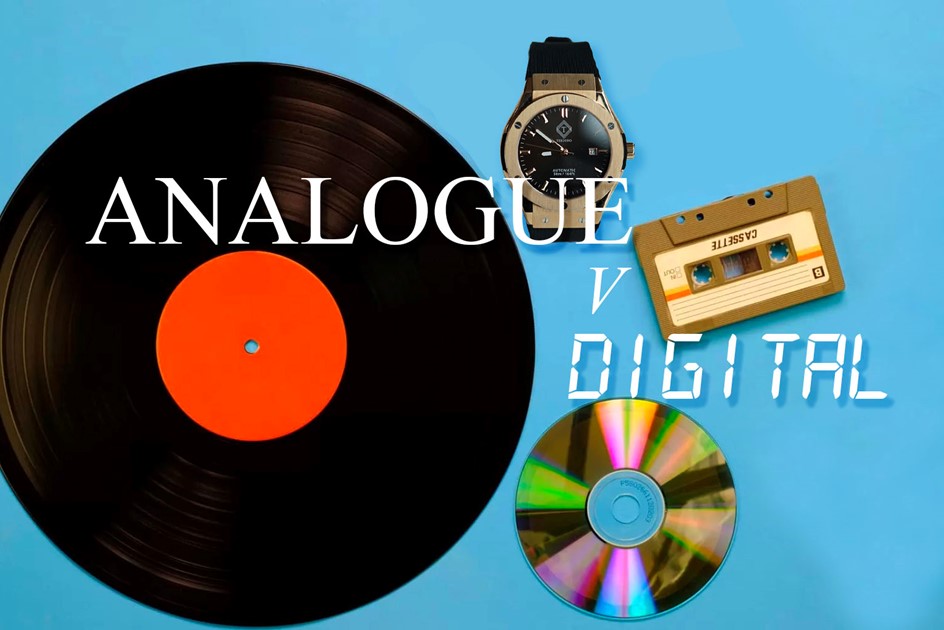Analogue vs digital: back to basics?

Whether you are reading as a ‘Boomer’, a ‘Gen X’, a ‘Millennial’ or a ‘Gen Z’, one thing is for certain; we have all witnessed phenomenal technological advancement in our everyday lives and an appetite to keep up with the latest technological trends in a remarkably short time frame. The aforementioned ‘Boomers’ and ‘Gen X’ are routinely utilising tech that was the stuff of science-fiction and comic books in their youth.
There are a number of industries that have seen exponential advancements in technology to benefit the masses whilst conversely having undergone a regression to simpler, more analogue machinery that has become the sweet spot for nostalgia among collectors and investors. This movement has contributed to seismic market value increases for anachronistic technology. In these instances, we then ask will this be comparable to the world of sports cars as the technological shift takes hold of the automotive industry?
As our first port of call, we examine our consumption of the audial medium. The way in which we listen to music has seen a format journey from vinyl to post-war 8-track and cassette, bringing the possibility of music mobility to the masses, through to digitisation via formats such as CD and mini-disc and on to non-physical mp3 and latterly on-demand streaming services. The latter brings previously unimaginable instant 'jukebox' access to an equally unimaginable quantity of music – every song ever created in the palm of your hand. Mention that idea just 20 years ago and you would've gotten a few odd looks.
Whilst these advances may seem ‘science fiction’ to those who lived through the previous decades witnessing the evolution in its entirety, they were also left reminiscing over a more rewarding and tactile experience. This has cultivated a thriving resurgence for the vinyl format, along with a re-energised collector’s market and a surge in prices for desirable pressings.
Watchmaking is yet another industry that has seen radical advancements, with the advent of quartz watches in the seventies and early eighties that largely replaced mechanical watches around the world, ultimately causing a well-documented decline in the Swiss watchmaking industry. It replaced the mechanical movement with a quartz clock alternative, and for a time, replaced an analogue aesthetic with digital displays such as LED or LCD.
Broadly speaking, quartz timepieces are much more accurate than their mechanical counterparts, in addition to having a much lower sale price. For a brief period, the quartz watch held a firm grip on global sales. Despite the profound success, however, quartz never seemed to capture the imagination of the collector, something was missing. Talk of the demise of Swiss mechanical watches proved unfounded and, having survived an early dip in global demand, a resurgence began to take shape for high quality Swiss movements, a booming collector’s market and an increase in values for certain models.
With these trends in audio formats and watchmaking in mind, it begs the question 'will we see a similar path in automotive?' The experience of living through the turbocharging and downsizing of engines, as well as potentially being on the cusp of new technologies and mass adoption of electrification would suggest that the smart money says yes. Will there be a collector’s market that shuns paddle shifts, touchscreens, lane-assist and mood lighting and be left wanting a more engaging, sonorous and tactile experience?
Sports cars in particular focus on perceived speed, agility and the visceral experience of driving – the sounds, smells and vibrations as the horizon rushes towards you. It’s also about making a statement, with a design that makes everything else look a little vanilla. But it’s no secret that the industry is at a crossroads – electric powertrains are levelling the playing field, meaning engine size is no longer a differentiating factor performance-wise. At the same time, manufacturers are under pressure to eke every last mile out of their battery packs, prioritising aerodynamics and efficiency. The battery packs themselves are not light and that doesn’t exactly lend itself to the tried and tested lightweight ethos of an agile sports car.
What then, are the sports car collector and investor opportunities, if indeed we begin to follow the same pattern as other industries? Are the last of the naturally aspirated V12s and V8s with manual transmissions and tactile switches and buttons the sweet spot, and the ones to watch for promising ROI in the years ahead?
READ Automotive watch partnerships that stood the test of time
READ Manufacturer-audio collaborations that turned it up to 11
Fancy test driving a car at some of the world’s best racing circuits? Book a simulator session to hit the track in the virtual world.

